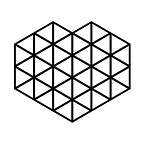This is how Hollywood makes its props in 2016
How creative studios create props for movies and how you can, too.
When you think of your favorite movie of all time, chances are you’re also probably thinking of the world within that movie — a faraway land (or galaxy) that the filmmakers have remarkably made believable for a two-hour or so span of time.
But to make that world truly believable, there’s a skill factor at play here that is often so convincing, most people don’t even catch them: the wonderfully awesome art of believable movie props.
Although the most realistic lightsabers, robots, and even costume designs were once only able to created within the confines of professional movie prop studios, the ‘garage inventors’ and ‘bedroom creatives’ of today can make them just as easily using affordable and accessible tools and services.
More recently, California-based Vitaly Bulgarov — a concept designer whose resume includes working with movie studios ranging from Paramount and Skydance to Dreamworks and Industrial Light & Magic — turned to 3D printing.
Working alongside Los Angeles-based Factor31 Bulgarov watched his Ultraborg Stiffneck concept go from a simple drawing to a fully realized high-detail physical object:
To create the high-detail print, the Factor31 team didn’t just turn to your average desktop 3D printer; to ensure that all of the details would be preserved in a high-quality finished product the team turned to PolyJet 3D printing technology. Similar to traditional inkjet printing, PolyJet 3D printers jet layers of curable liquid photopolymer onto a build tray to create physical objects with a wide range of materials.
“Our decision to go with PolyJet was a highly-researched decision,” says Factor31 co-founder Peter Hamilton. “Two of the largest driving factors were resolution and speed. Thanks to the PolyJet printer, our turnaround times for projects like Vitaly’s are incredibly fast, and yet we can still retain an incredible amount of accuracy and detail in our final product.
To achieve the final look of their 3D printed cyborg project, the team at Factor31 added between 4 and 8 coats of a special epoxy paint developed for using with firearms. Additionally, several small detail parts were given a chrome effect using glossy black paint and graphite powder.
Needless to say, the result is absolutely stunning and goes to show how quickly a concept design can go from a computer sketch to a usable physical object in a film or even for a cosplay costume.
Ready to get your hands dirty and start building your own photo-realistic props? Check out our 350+ locations for 3D Printing with PolyJet and learn how to get your designs printed today!
About 3D Hubs:
3D Hubs is world’s largest and fastest growing network of 3D printers. By connecting everyone to nearby 3D Printers, 3D Hubs is accelerating a future of local and on-demand production. The network consists of over 24,500 printing locations worldwide, providing over one billion people access to a 3D printer within 10 miles of their home. To learn more, visit 3dhubs.com
